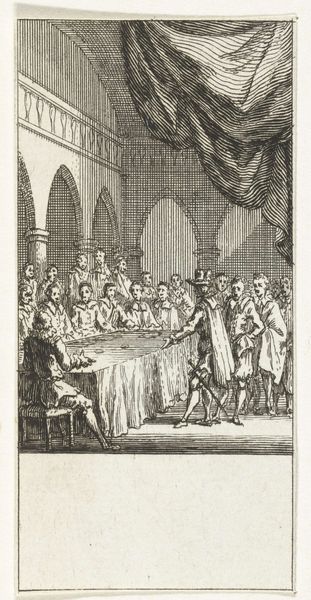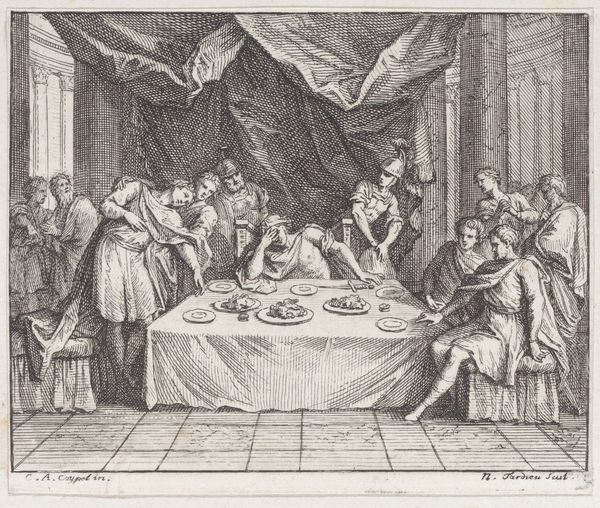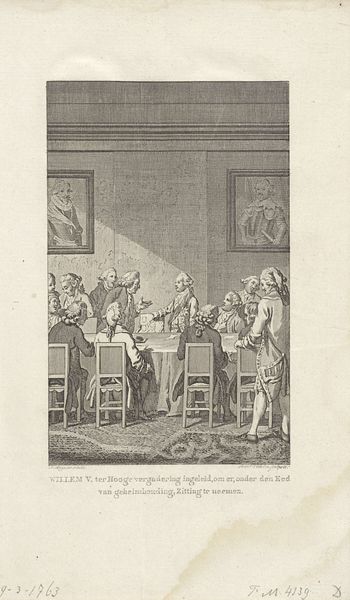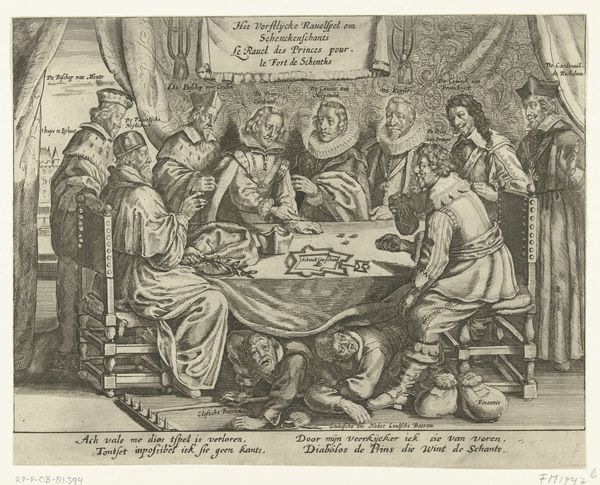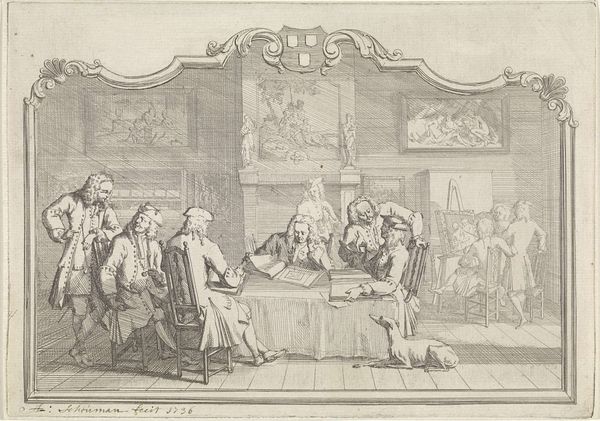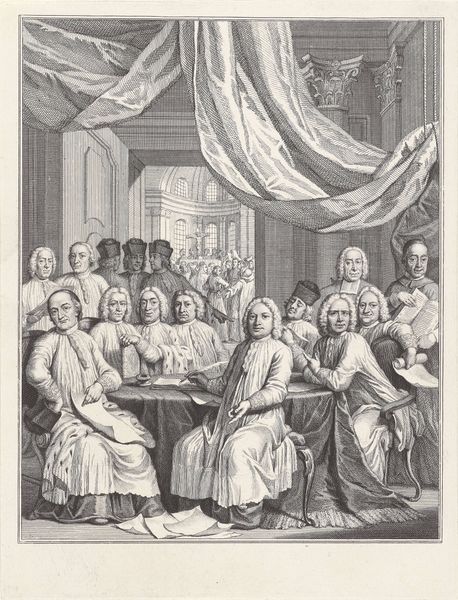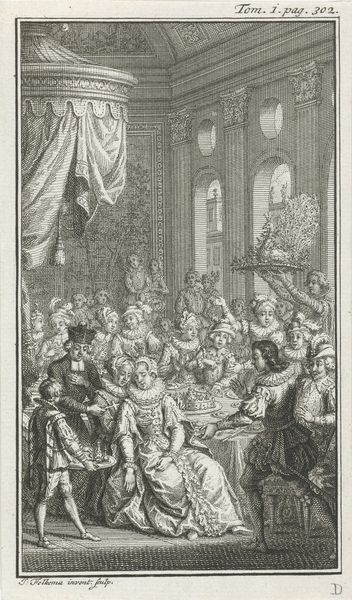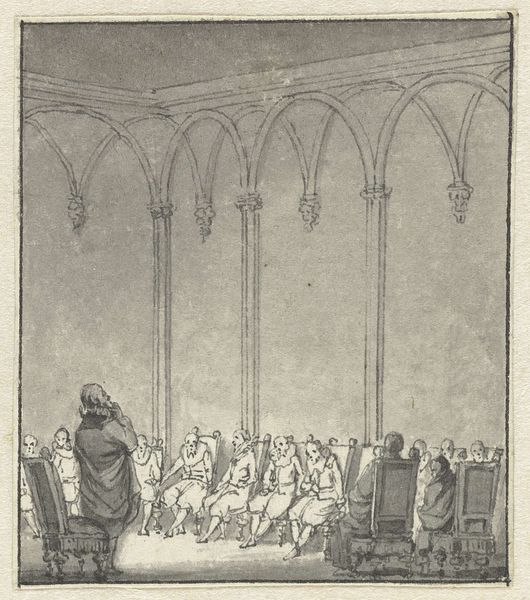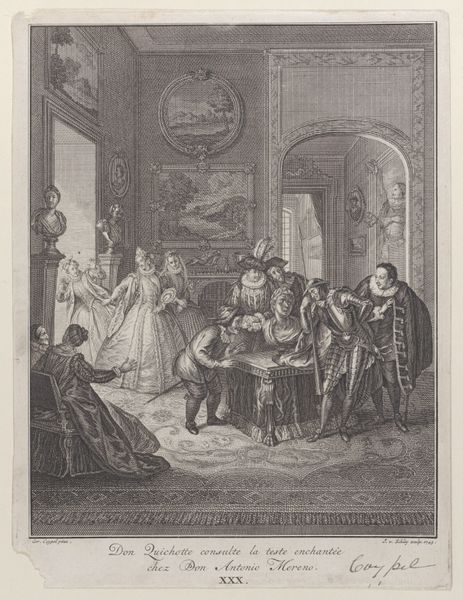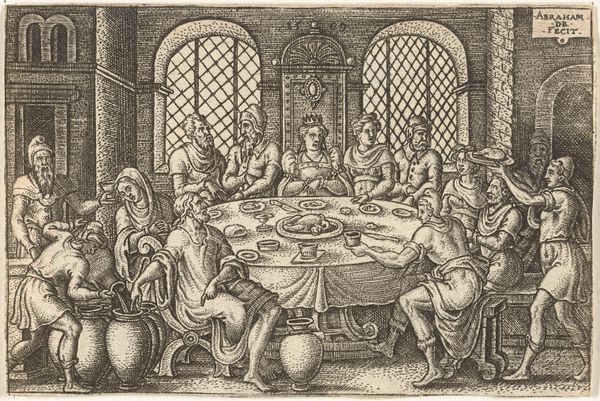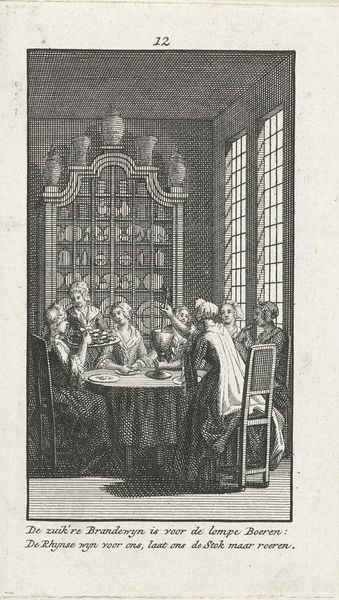
Dimensions: height 86 mm, width 104 mm
Copyright: Rijks Museum: Open Domain
Editor: So this is "The Closing of the Union of Utrecht, 1579," an engraving made between 1782 and 1784 by Simon Fokke. It's currently housed in the Rijksmuseum. It definitely evokes a sense of formal importance and, honestly, a bit of claustrophobia with all those figures crammed in. What strikes you when you look at it? Curator: The engraving style itself is interesting. It emerged much later to illustrate an event that was quite pivotal. However, it’s a simplified almost propaganda-type narrative that tends to sidestep deeper questions about power dynamics. Notice anything particular about who's represented and who isn't? Editor: Well, everyone seems to be a nobleman of some kind, or at least well-to-do… I don't see any women. And someone at the back seems to be a person of color? Curator: Exactly! This representation speaks volumes about the exclusionary nature of power at the time. These crucial decisions weren't made in a vacuum. Who was excluded from the table, and how did their exclusion enable this "unity"? It forces us to think about the narratives that etch themselves into history, doesn’t it? What stories do they silence? Editor: It really does! I mean, focusing on who *isn't* in the picture sheds light on whose voices were deliberately suppressed when forging these foundational agreements. What does that solitary Black figure signify? Curator: It prompts necessary and important conversations around race and colonialism, especially when re-examining the self-fashioned Dutch “Golden Age”. That historical moment built part of its wealth and prominence through extraction from, and exploitation of, people from lands across the world. These absences and inclusions in a work of art ask us to confront an exclusionary lens of progress and consider whose interests it truly serves. Editor: Wow, I never would have thought to look at it that way. So much to unpack! Curator: Indeed! And that's the ongoing value of art history, and this conversation, as well. To recognize the voices that whisper—or scream—from the margins, always challenging us to see beyond the dominant narrative.
Comments
No comments
Be the first to comment and join the conversation on the ultimate creative platform.
